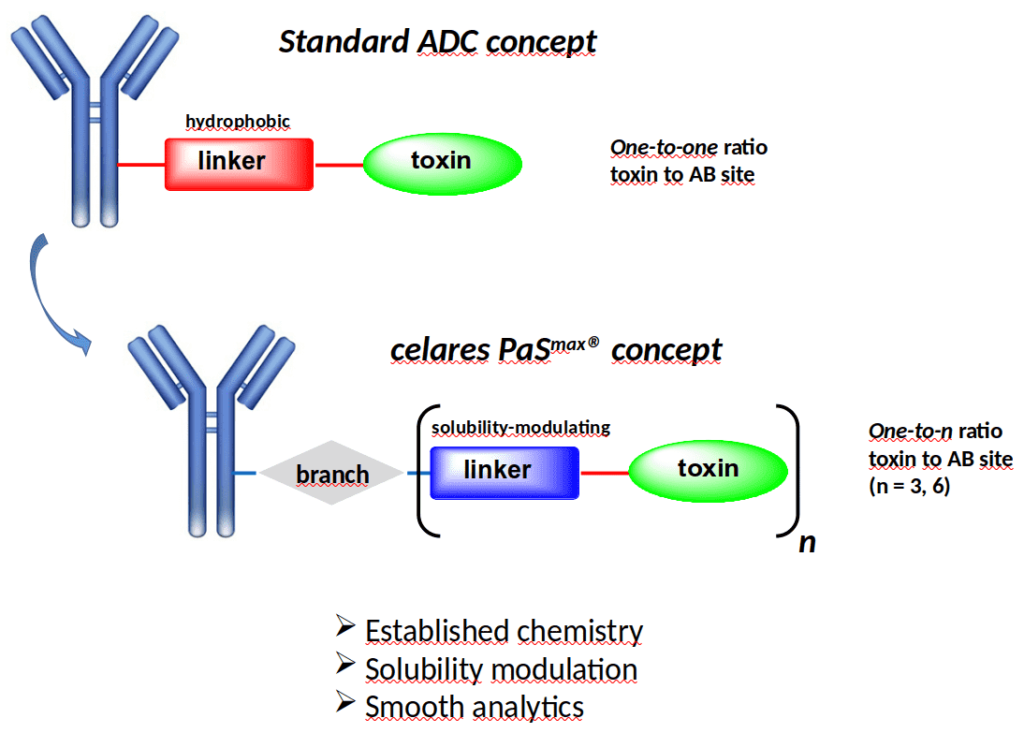PaSmax® – (P)ayload (a)nd (S)olubility (max)imization – is a branched, PEG-based linker to connect small-molecules to biologics in unequal ratio.
The technological basis of PaSmax® is a core branching unit to which functional entities can be attached according to the chemical and technical needs. Whereas traditional linear conjugations result in 1 : 1 ratios between the two connected entities, the use of PaSmax® allows the attachment of 3 or even 6 small-molecules at once, e.g., toxins or therapeutic drugs, to the biological moiety. Moreover, due to the PEG serving as solubility modulator, even highly hydrophobic small-molecules such as paclitacel can be kept in aqueous solution. Thus, PaSmax® is the ideal linker to increase the payload of biologics with small-molecule drugs. For example, antibody drug conjugates (ADCs) for off-cancer ADC applications are particularly suited for PaSmax® since non-conventional drug-antibody ratios (DARs) of up to 24 are easily achieved.

Furthermore, by using mono-dispersed PEG chains for the attachment to the branching unit, large single molecule PaSmax® reagents can be produced. The unique properties of PaSmax® are summarized in the following table.
| Traditional ADCs | PaSmax® ADCs |
|---|---|
| One payload per attachment site | ADCs with high payload available |
| Organic co-solvents often mandatory for conjugation | Organic solvent-free preparation of the ADCs |
| Short & poorly soluble linker | Improved solubility of the drug |
| High risk of aggregation | Low risk of aggregation |
| Challenging quality analytics | Reduced process complexity |
PaSmax® is covered by patent application EP2913064 A1.
Contact partner

Dr. Sophie Janke
Head of Synthesis
+49 30 9489 2350
